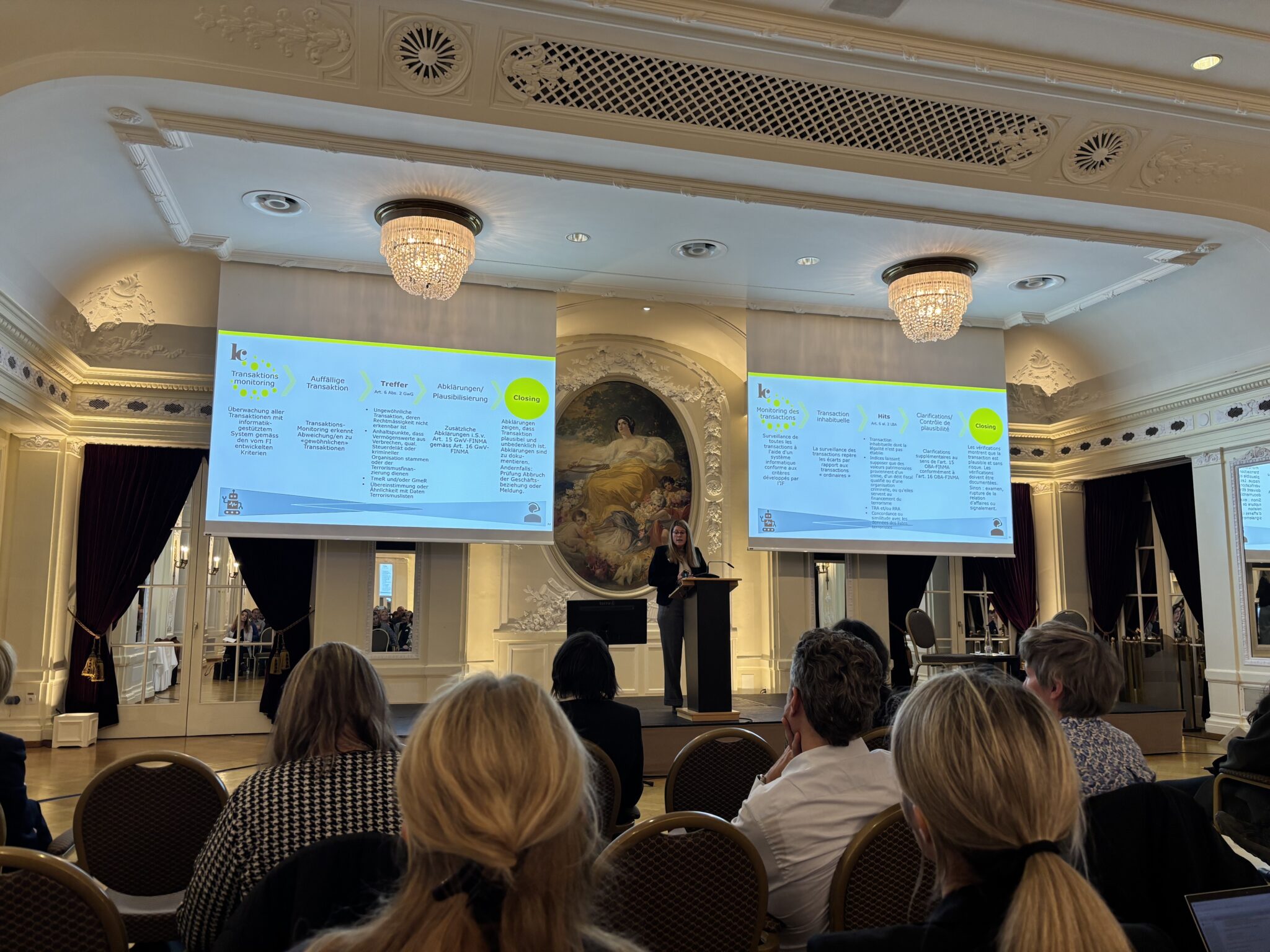15. Oktober 2018
Market Manipulation and Insider Trading in Switzerland – an overview* (Part I)

Von André Basler
In today’s world market manipulation can occur anywhere, anytime and spread fast over a globally connected system. Therefore it is increasingly important to harmonize the guidelines as well as the definition of market abuse, so criminal activity can be detected and enforced effectively at an early stage through cooperation conducted by Market Authorities and Law Enforcement worldwide.
For the understanding of the topic, I’d like to summarize the terms related to the topic and give a brief inside on the different type of market manipulation.
Capital Market
The term «Capital Market» refers to activities that gather funds from some market participants and make them available to other players in the market requiring or having a demand for those funds. The core function of such a market is to improve the efficiency of transactions so that not each individual market participant needs to conduct searches and analysis, create legal agreements and complete either capital or fund transfer agreements. A regulated capital market ensures safe funding and trading within its given guidelines and jurisdictions.
Capital markets consist of both supply and demand of funding. Suppliers of funds include private households and on the other hand institutions serving them, such as insurance companies, pension funds or charitable foundations. Demanders of these capital funds include private purchasers, nonfinancial companies, governments financing infrastructure investment and other operating expenses. Capital Markets include primary markets, where new equity stock and bond issues are sold to investors, and secondary markets, where existing securities are traded.
It is important to understand the distinction and differences between the secondary market and the primary market. When an entity issues bonds and/or stocks for the first time and sells those securities directly to investors, then this transaction takes place on the primary market. Basically, the most common primary market transactions are initial public offerings, so called IPOs. During an IPO a primary market transaction occurs between the purchasing investor and the investment bank underwriting the IPO. Any proceeds from the sale on the primary market goes to the company that issued the stock.
If then later initial investors decide to sell their stake in the company to demanders willing to purchase the stake of the company, they can do so on the secondary market. Another important distinction between the primary and the secondary market is the pricing. Primary market prices are often set before the IPO takes place, whilst the basic forces of supply and demand determine prices in the secondary market. If the majority of investors believe a stock is likely to increase in value and rush to the market to purchase it, the stock’s price will typically rise. If a company loses favor with investors or fails to post sufficient profits, its stock price is likely to decline as demand for that security decreases.
Securities
A security is a negotiable instrument in finance that holds some type of monetary value. It represents an ownership position in a publicly via stock traded stake of a corporation, a creditor relationship with a governmental body or a corporation (represented by owning that entity’s bond), or rights to ownership as represented by an option.
The creator of these securities for sale is best known as the issuer, and those that buy them are investors. In general, securities represent an investment and a means by which municipalities, companies and other commercial enterprises can raise new capital through selling stakes in their company or lending money and pay interest on this capital. A lot of money can be funded when companies decide to go public, selling stock in an IPO, for example. Not just private companies, also cities, states or county governments can raise funds for a project by floating a municipal bond issue. Depending on an institution’s market demand or pricing structure, raising capital through securities can be a preferred alternative to financing through a bank loan.
Purchasing securities with borrowed money, an act of raising funds known as buying on a margin, is a popular investment technique. In essence, a company may deliver property rights, in the form of cash or other securities, either at inception or in default, to pay its debt or other obligations to another entity. These collateral arrangements have been growing of late, especially among institutional investors.
Mostly, publicly traded securities are listed on stock exchanges in a country, where issuers of securities can seek security listings and attract investors by ensuring a moderate regulated, liquid and active market in which trade is conducted. Nowadays informal electronic trading systems have become more common and securities are traded «over-the-counter» or directly among investors online or through a phone call to a trader.
As mentioned above, an IPO represents a company’s first major sale of equity securities to possible private investors interested in a stake of the company. Following an IPO, all of the newly issued stocks, while still sold in the primary market, are referred to as a secondary offering. Alternatively, securities may be offered privately to a qualified and restricted group of investors in what is known as a private placement – an important distinction in terms of both company law and securities regulation. It is also common that companies sell stocks in a combination of public and private placement.
As briefly mentioned above, in the secondary market, also known as the aftermarket, securities are simply transferred as assets from one investor to another: shareholders, who acquired securities in the first or secondary market, can sell their securities to other investors for cash and/or capital gain or loss. The secondary market thus supplements the primary. The secondary market is less liquid for privately-placed securities, since they are not publicly tradable and can only be arranged among qualified investors. (1)
Market Manipulation
Market manipulation involves actions intended to cause an artificial movement in the market price, to make a profit or avoid a loss. It is a deliberate attempt to interfere with the free and fair operation of the market and create artificial, false or misleading appearances with respect to the price of, or market for, a product, security, commodity or currency. Many forms of market manipulation are prohibited in most countries, in particular, it is prohibited in the European Union under Article 12 of the MAR and in Switzerland under Article 143 FinfraG.
One common example involves a situation where false information is released into the market, such as a rumor that a takeover offer is about to be made for a company, in order to move up the price of the securities and let the manipulator profit from the price change. Another common example involves artificial trades designed to move the price of the security, such as “wash sales”. Market manipulation can come in a variety of manifestations.
Even though many forms of market manipulation are prohibited, not every manipulation is against the law. Some mechanisms are used in normal market transactions such as high-speed trading for example. The following are the most common types of market manipulation listed and explained.(2)
-
Churning – Churning is a term applied to the practice of a broker conducting illegal excessive trading in a client’s account mainly to generate / increase commissions through buying and selling orders at the same price. This activity is intended to drive up the price and attract other investors. When there are excessive commissions with no noticeable portfolio gains, it is likely that churning might have occurred.
-
Wash trading – Wash trading occurs as a trader buys and sells the same securities simultaneously. It is a process whereby a trader buys and sells a security for the explicit purpose of providing misleading information to the trade market where the securities are traded. In some situations, wash trades are executed by investors acting as both the buyer and the seller of the security, other times wash trades are executed by a trader and a broker who are colluding with each other. Wash trades benefits brokers who earn commissions from the trades. Wash trades conducted around the endpoint of a tax year are also sometimes used to evade taxes. Wash trades are not in and of themselves unlawful, but they are almost always used for illegal purposes.
-
Cornering – To corner in a market means to lawfully acquire enough shares of a security type, such as those of an entity in a particular industry, or to hold a significant commodity position to be able to manipulate its share price. The term of “cornering” implies that the market has been backed into a corner, and there is no possibility for the market to move and to find other sellers and buyers. An investor needs deep pockets to be able to corner a market, even in a niche market, because it means acquiring significant physical assets.
-
Quote stuffing – Quote stuffing is a form of high-frequency trading conducted by programs that can execute market actions with enormous speed. High-frequency trading in and of itself is not against the law, neither in Switzerland nor the European Union. The tactic of quote stuffing involves using specialized, high-bandwidth hardware to quickly enter and withdraw large quantities of orders in an attempt to flood the market. Through this flood quote stuffers are able to gain an advantage over slower market participants. Also quote stuffing is not in and of themselves unlawful, but it is mostly used for illegal purposes.
-
Ramping – Ramping are illegal actions specifically designed to artificially raise the market price of listed securities and to give other market participants the impression of voluminous trading in order to make a quick profit.
-
Bear raiding – Bear raiding is an attempt by a broker to legally short sell or heavy sell a security to drive down the price of the security, allowing it to be bought back at a lower price and thus make a profit on the price difference.
-
Spoofing – Spoofing is a type of scam where an intruder attempts to gain unauthorized access to a user’s system by pretending to be the user. The main purpose is to trick the user into releasing sensitive information in order to gain access to one’s bank account, computer system or to steal personal information, such as passwords etc. Information gained through spoofing is commonly used to manipulate commodity markets. Spoofers feign interest in trading futures, stocks and other products in financial markets creating an illusion of exchange pessimism in the futures market when many offers are being cancelled or withdrawn, or false optimism or demand when many offers are being placed in bad faith. Spoofers bid or offer with intent to cancel before the orders are filled. Spoofing can be a factor in the rise and fall of the price of shares and can be very profitable to the spoofers who can execute time buying and selling based on this manipulation. Therefore, the spying itself is not what influences the market but the spoofers using the firms’ information to influence the market is.
-
Last but not least the commonly-known insider trading – This is perhaps the most known type of illegal market manipulation and I would like to explain this term under a separate title (Insider Information). The term insider information refers to situations when insiders with confidential, not yet public information, about a company use that information to their own or directly related third parties‘ benefit.
Über den Autor
Autor: André Basler

List of literature
(1) https://www.six-group.com/exchanges/knowhow/exchange/securities/participants_de.html
(2) http://www.bsic.it/marketmanipulation/
Learn more about Market Manipulation and Insider Information in Part II of André Baslers Blog. It will be published next Monday, October 22, 2018.
* Die meisten Blogbeiträge erscheinen in Deutsch. Ausnahmsweise erscheinen Beiträge auch in Englisch und Französisch, den Sprachen, in denen Schweizer Expertinnen und Experten in der Bekämpfung Wirtschaftskriminalität häufig arbeiten.



Kommentare
0 Kommentare
Danke für Ihren Kommentar, wir prüfen dies gerne.